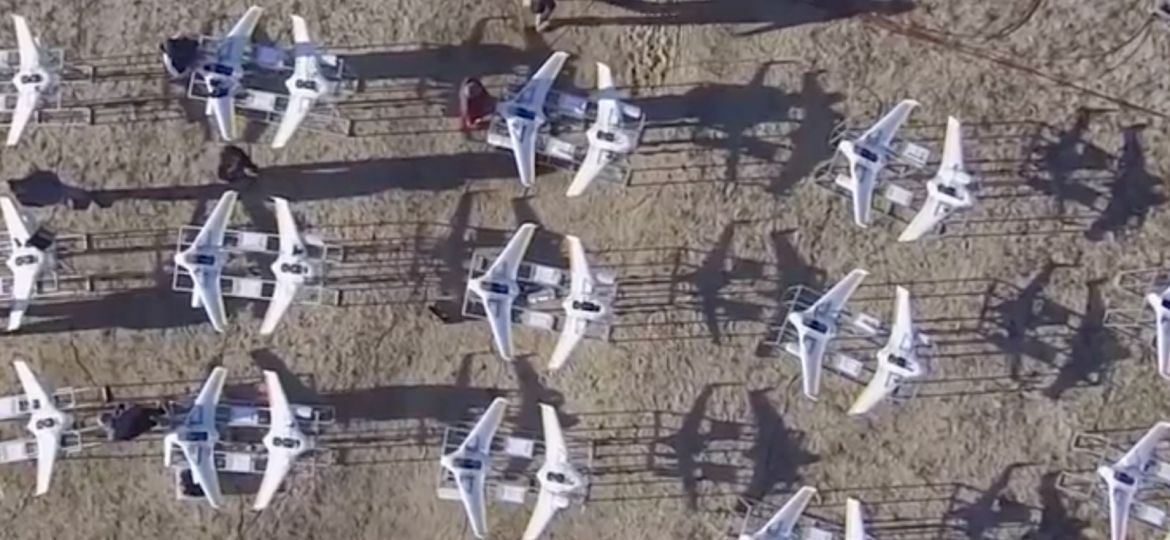
WHY THIS MATTERS IN BRIEF
The automation of war, and warfare, is accelerating as countries race to embrace new AI powered autonomous platforms.
The US Marines, who recently announced they want their own fully autonomous F-35’s are getting their “Low Cost Unmanned Aerial Vehicle Swarming Technology” platform, also known as LOCUST, ready for prime time, and they’re going to be armed.
The LOCUST system lets autonomous swarms of “Coyote” UAV drones, which are made by Raytheon and cost $15,000 a pop, collaborate and team up to perform a variety of military tasks, which range from running interference and surveillance missions, through to helping extend the sensor range of F-35’s and the US Navy’s fleet of ships, including its latest addition – the stealthy 600ft DGD-1000 Zumwalt.
Over time though it seems inevitable that LOCUST will spread its wings further and find its way into the rest of the US military apparatus. Recently, for example, we saw a demonstration of F/A-18’s releasing hundreds of drones into the sky from pods slung beneath their bellies, and as the US military steps up talk of the F-35’s controlling and teaming up with UAV’s the Coyote’s seem like they’d make an ideal accomplice.
Back on the Marine front though, last week Lt. Gen. Robert Walsh, the US Marine Corps Commanding General for Combat Development, announced at the Unmanned Systems Defense Conference in Washington D.C., that the corps believes that not only will LOCUST slow down the enemy but that it will also save Marine’s lives and give them a strategic advantage in combat.
“Today, we see what other services are doing [with technology], and whether it’s on the surface, under the surface or in the air, we want to tackle the question of how Marines move ashore differently in the future,” he said.
“Instead of Marines being the first wave in, it’ll be unmanned robotics – sensing, locating and maybe killing out front of those Marines,” he said, “we see swarm technology as exactly the type of thing that will lower costs, help us dominate the battlespace, and complicate things for the enemy.”
So to sum up then that’s swarms of autonomous Hunter-Killer UAV’s, check. On the plus side though at least we’ll also have the technology to treat injured soldiers on the battlefield by downloading their digital twins and 3D printing replacement body parts. What technology taketh away it also gives back.
However, let’s not forget that the autonomous killer robots have their own nemesis – namely the UN who will be voting this year on whether or not to ban them. It’s not easy being an autonomous killer robot these days… poor things.
















